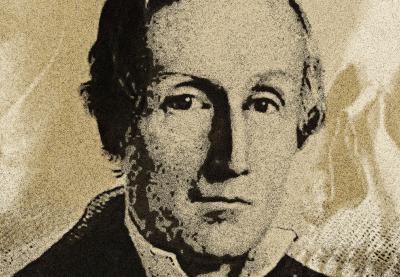Most natural scientists of the 19th century held the belief that human beings were not only members of different races but of different species (also known as the theory of polygeny). This school of thought relied on the work of Samuel Morton.
Morton was a Philadelphia physician and was considered one of the United States’ greatest scientists. He supported polygeny through his work measuring human skull volumes. He measured modern and ancient skulls and concluded that the human race (or species) could be ranked on a scale of intelligence. His measurements showed that modern Caucasian (his term) skulls had the highest volume, followed by Chinese skulls; American Indian skulls had the lowest volume. Morton found that the volume of African skulls were third in line, above both South Asians and the American Indians.
Morton’s skull measurements were used to justify the institution of chattel slavery in the United States: If Africans were not of the same species as Caucasians, then enslaving them was more easily explained and excused. Indeed, this belief supported the reasoning of Justice Roger B. Taney in the Dred Scott decision of 1857.
Today we understand that both the theory of polygeny and Morton’s skull measurements were deeply flawed. First, Morton did not have a representative sample of human skulls on which to draw statistically valid inferences. Second, there is no relationship between normal variation in skull volume in any species and the measured “intelligence” of its members. Morton failed to understand the significance of human biological variation due to the institutional racism of the period, his own bigotry and the fact that he was operating under an incorrect scientific assumption—that different races originated in different zones of the world.
Modern biological thinking is organized by evolutionary science that recognizes the common descent of all biological organisms on this planet, including all humans. Unfortunately, we are not doing an adequate job of incorporating evolutionary science in our K-12 and university curricula across the nation. This leaves students without the analytical tools required to understand human biological variation and its significance to our concepts of race—in other words, vulnerable to the types of errors Morton made. If we are going to effectively teach our students about the biology of race, we must also teach them the fundamentals of evolutionary biology.
Evolutionary reasoning is grounded in fundamental critical thinking about the history of populations and individuals. Grasping this relationship makes it much easier to dispel the logical fallacies associated with stereotyping and standard racist positions like the existence of “racial IQs” and race-specific disease. But curriculum revisions that effectively address human biological variation will not happen on their own. This shift will require diligence and activity on the part of educators and communities who are committed to their children receiving quality science and social science education. This education must happen; we cannot continue to allow ignorance of our biological heritage to continue to fuel racial intolerance. We cannot afford another Samuel Morton.
